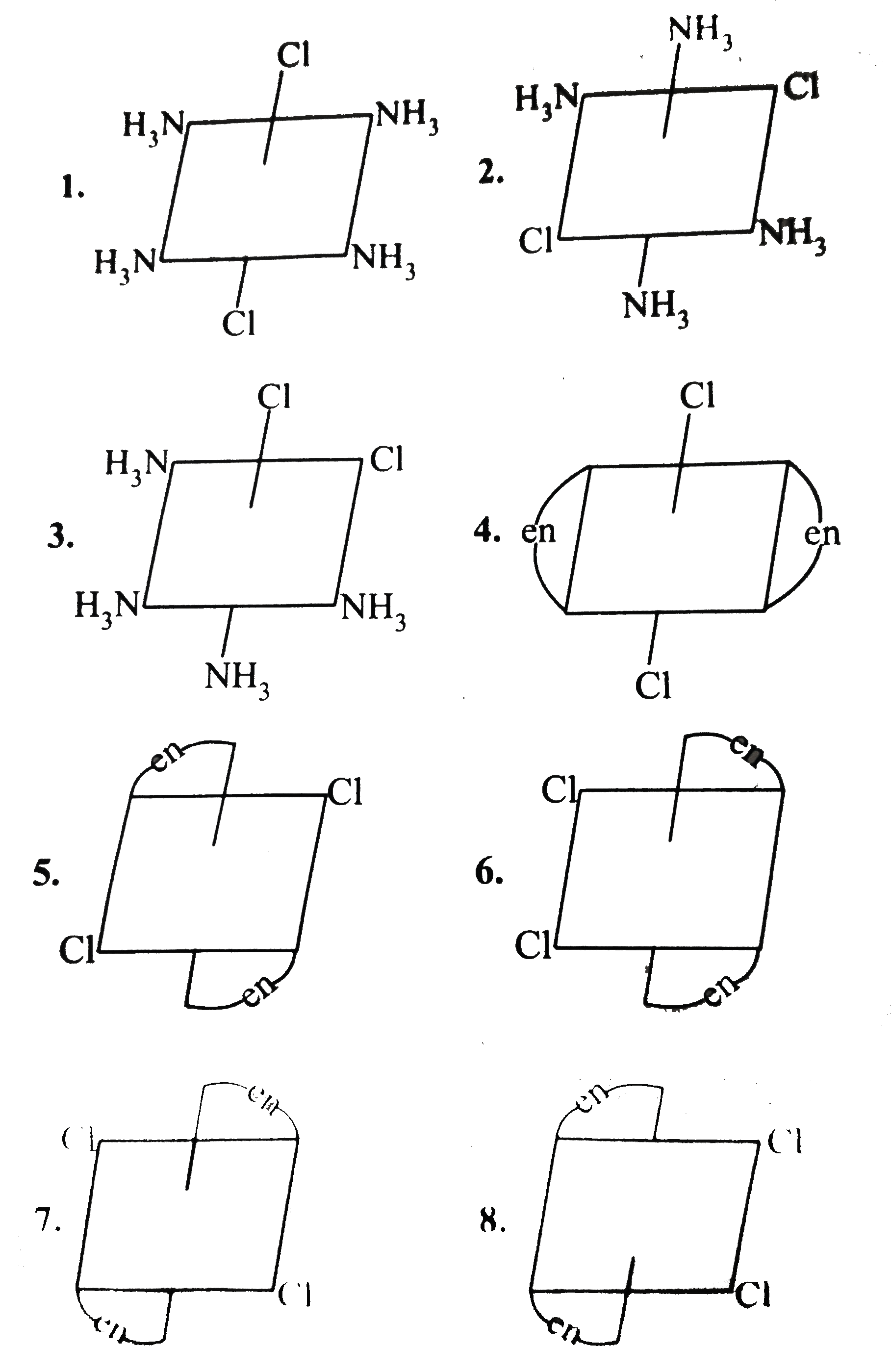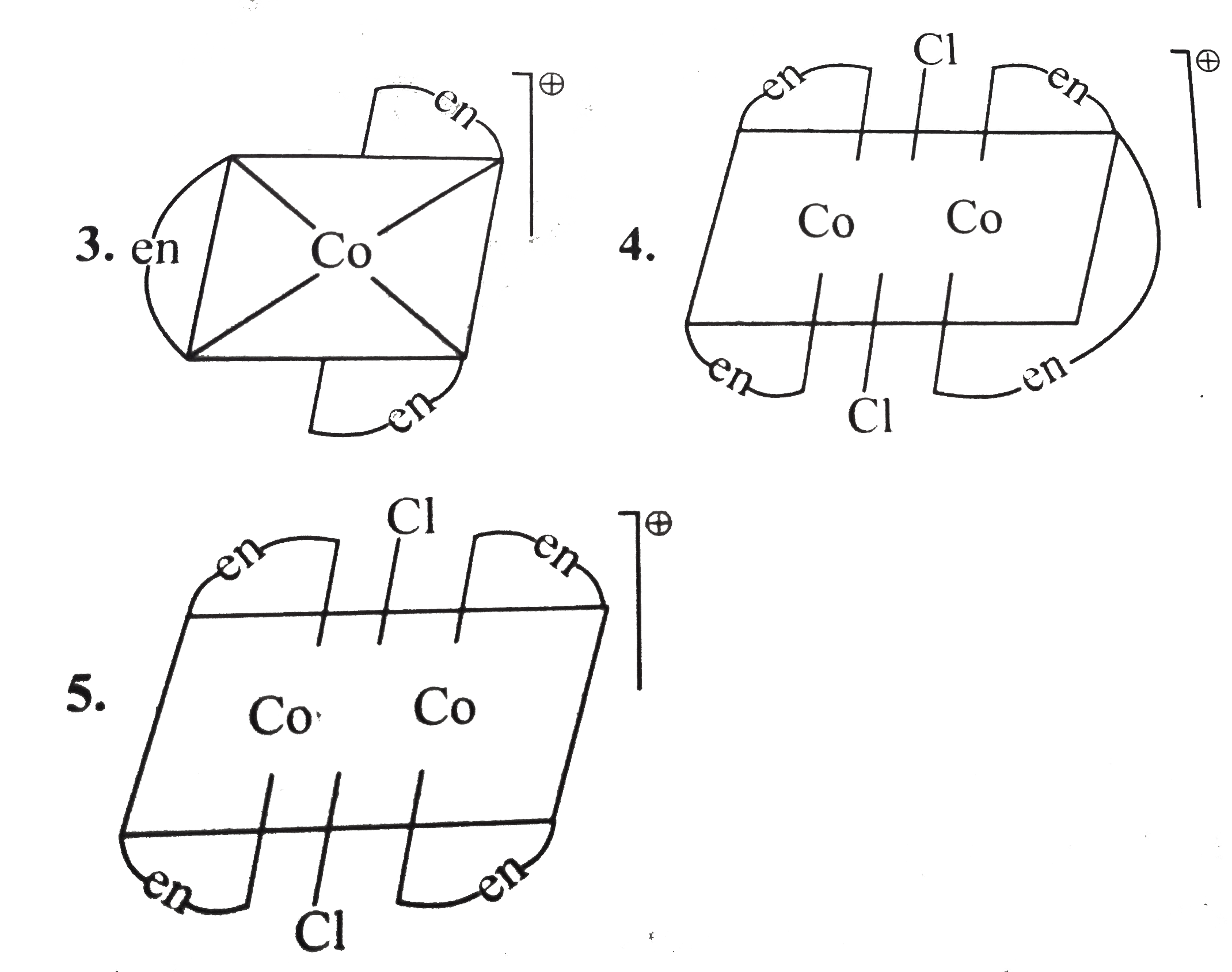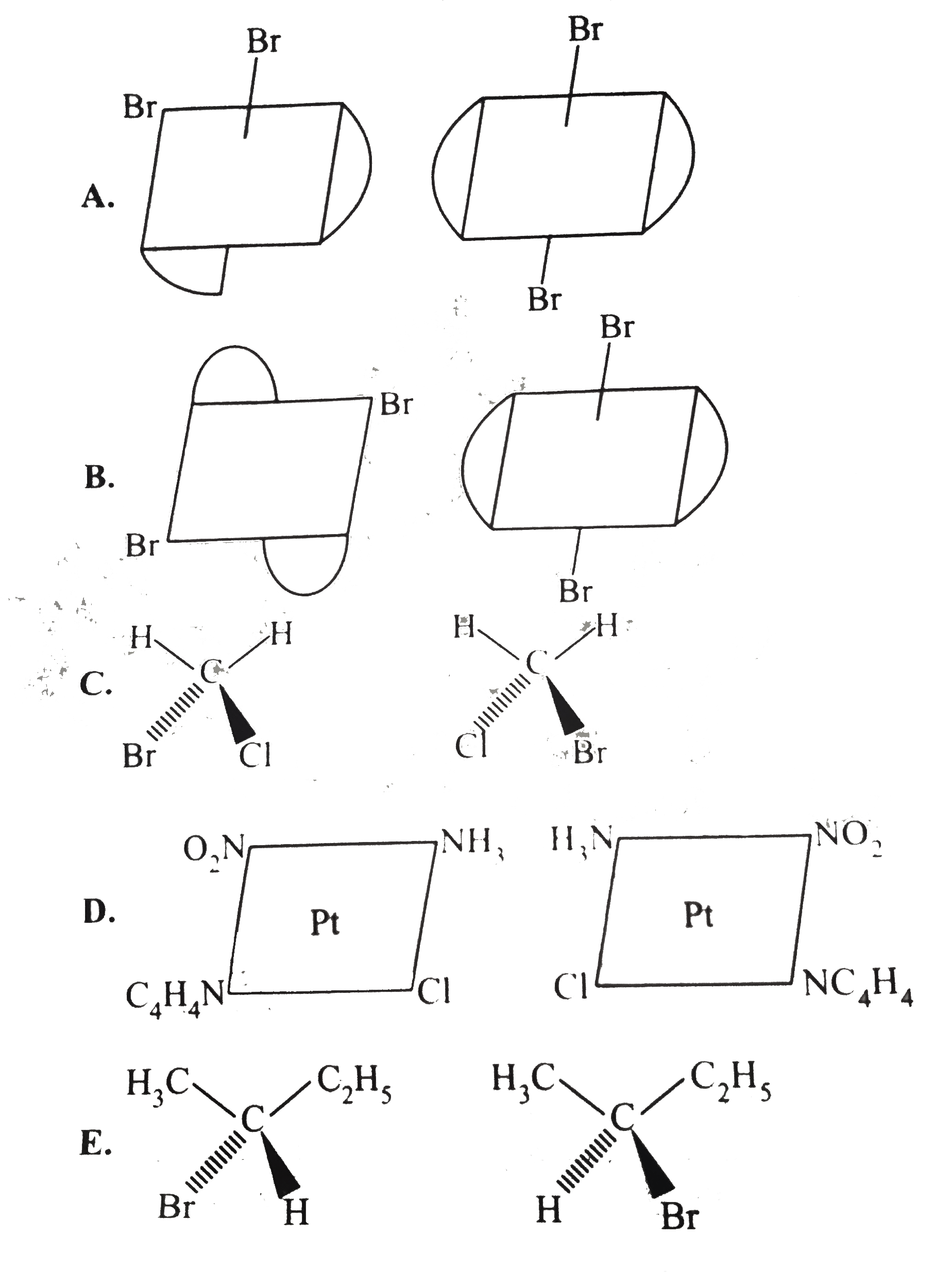Complete Solutions to Illustration of chapter COORDINATION COMPOUNDS of Class 12 book with complete answers and questions
| Class 12 | CHEMISTRY |
| Chapter | COORDINATION COMPOUNDS |
| CENGAGE CHEMISTRY | Illustration |
| Number Of Questions | 49 |
| Academic Year | 2023-24 |
Why `NH_(3)` form coordinate complex, while the isoelectronic species `CH_(4)` does not .
02:16View SolutionCalculate the oxidation number of Ni ion `[Ni (H_(2)O_(6))_(6)]^(2+)]` .
01:03View SolutionCalculate the oxidation number of Ni in `K_(2)[Ni(CN)_(4)]` .
01:10View SolutionWhat is the coordination number and oxidation state of Al in the complex `[AI(H_(2)O)_(4)(OH)_(2)]^(o+)`? .
01:40View SolutionIn the complex `[Fe(H_(2)O)_(5)CI]Br`, identify
(a) Ligands and their charges
(b) Charge of the central ion in the complex
(c ) What-would happen if Ag `NO_(3)` is added to the compound at `0^(@)C` .07:29View SolutionWrite the formula for the following coordination compounds
(a ) Tetraamineaquachlorido cobat (III) chloride
(b) Postassium tetrahydroxozincate (II)
(c ) Potassium trioxalatoaluminate (III)
(d) Dichloridobis (ethane 1, 2 -diamine)cabalt (III) ion
(e) Tetracarbonylnicked (0)02:09View SolutionWrite the formula for the following coordination compounds
(a) Tetrahydroxozincate (II) chloride
(b) Pentaaquachloridochromium (II) chloride
(c ) Tetrabromidocuprate (II) ion01:32View SolutionName of the following complex ions
(a) `[PdBr_(4)]^(2-) (b) [CuCl_(2)]^(o+)`
` (c ) [Au(CN)_(4)]^(o+)(d) [AlF_(6)]^(3-)`
`[Cr(NH_(3))_(6)]^(3-) (f) [Zn(NH_(3))_(4)]^(2+)`
(g) `[Fe(CN)_(6)]^(3-)` .13:45View SolutionFrom the experimental facts given below determine the correct structure of solid `CrCI_(3) .6H_(2)O` Solution containing `0.2665g` of `CrCI_(3)6H_(2)` O was passed throuhg cation exchange resin in acid form The acid liberated was found to react completely with `30mL` of `0.10M` Na OH `("Molecular mass of" CrCI_(3).6H_(2)O=266.5)` .
04:53View SolutionWhich of the following complexes (in solution) will have greater value of molar conductivity Explain giving reason
(a) `K_(4)[Fe(CN)_(6)]` and `K_(3)[Fe (CN)_(6)]`
(b) ` [Pt(NH_(3))_(2)CI_(2)]` and `[Pt (NH)_(3))_(6)]Cl_(4)` .02:48View SolutionArrange the following compounds in the order of decreasing molar conductivity in aqueous solution.
`a. K[Co(NH_(3))_(2)(NO_(2))_(4)]`
`b. [Cr(NH_(3))_(3)(NO_(2))_(3)]`
`c." " [Cr(NH_(3))_(5)(NO_(2))]_(3)[Co(NO_(2))_(6)]_(2)`
`d." "[Mg(Cr(NH_(3)(NO_(2))_(5)]`04:10View SolutionArrange the following compounds in the order of decreasing molar conductivity in aqueous solution.
`a. K[Co(NH_(3))_(2)(NO_(2))_(4)]`
`b. [Cr(NH_(3))_(3)(NO_(2))_(3)]`
`c." "[Mg(Cr(NH_(3)(NO_(2))_(5)]`02:33View SolutionCalculate the `EAN` of `CO` in `[Co(NH_(3))_(6)]^(3+)`(Atomic number of `Co= 27)` .
01:48View SolutionOn the basis of `EAN` rule predict the number of unpaired electrons and magnetic moment for the following compounds
(a) `[Cu (NH_(3))_(4)]^(2+)`
(b) `[Cr(NH_(3))_(6)]Cl_(2)` .06:02View SolutionCalculate the `EAN` of the underlined atoms in the folloiwng complexes.
(a) ` [ul (Ca)(edta)]^(2-)`
(b) `[Ni (py) (en) (NH_(3))_(3)]^(2+)` .03:40View SolutionDedue the value of x in the following compounds.
(a) `[Mo(CO)_(x)]` (b) `[Co_(2)(Co)_(x)]^(2-)` .02:46View SolutionDescribe a simple test to distinguish between the following pairs of compounds
`[Co(NH_(3))_(5)Br]SO_(4)` and (B) `[Co(NH_(3))_(5)SO_(4)]Br`01:35View SolutionWrite hydrate isomers of the following and also give increasing order of the conductance of the isomers
`[Cr(H_(2)O)_(6)]Br_(3)`
(b) `[Cu(H_(2)O)_(4)]CI_(2)` .05:28View SolutionWhy is geometrical isomerism not possible in tetrahedral complexes having two different types of unidentate ligands coordinated with the central metal ion ?
06:22View SolutionDraw structure of geometrical isomers of `[Fe(NH_(3))_(2)(CN)_(4)]^(-)`
01:32View SolutionDraw structures of geometrical isomers possible for `[Co(en)CI_(2)Br_(2)]^(Θ)` .
02:13View SolutionIn the reaction
`[CoCl_(2)(NH_(3))_(4)]^(o+)rarr[CoCl_(3)(NH_(3))_(3)]+NH_(3)`, only one
isomer of the complex product is obtained. Is the initial complex cis or trans ? .05:52View SolutionWhen `[Ni(NH_(3))_(4)]^(2+)` is treated with conc `HCI` two compounds having the formula `Ni(NH_(3))CI_(2)` (designated as I and II are formed) I can be converted into II ny boiling in dil `HCI` A solution of I reacts with oxalic acid to form `Ni(NH_(3))_(2)(C_(2)O_(4))` II does not react with oxalic acid Deduce the configuration Of I and II and the geometry of Ni (II) complexes .
03:14View SolutionHow can be the following pair of isomers be distinguished from one another
I `[Co(NH_(3))_(6)][Cr(NO_(2))_(6)]` and
(II) `[Cr(NH_(3))_(6)][Co(No_(2))_(6)]`01:58View SolutionWrite all geometric isomers for an octahedral complex `[MCI_(2)(NH_(3))_(4)]` .
02:05View SolutionOut of the following two coordiantion entities which is chiral (optically active) ?
(a) `cis-[CrCl_(2)("ox")_(2)]^(3-)`
(b) trans - `[CrCl_(2)("ox")_(2)]^(3-)`02:49View SolutionWrite the structure and name of the following and their ionisation isomers
`[Pt (NH_(3))_(3)(NO_(2))]CI`
(ii) `[Pt (NO_(2))(H_(2)O)(NH_(3))_(2)]Br`
(iii) `[Co(NH_(3))_(5)Br]SO_(4)` .08:32View SolutionA coordination compound `CrCl_(3)* H_(2)O` gives white precipitate of `AgCl` with `AgNO_(3)` . The molar conductance of the compound corresponds to two ions . The structural formula of the compound is
04:03View SolutionWrith the name of the following isomers .
[Cr(en)3][Co(CN)6]01:25View SolutionDraw the structures and write the names of all possible isomers of
`[Pt(SCN)(NH_(3))]SCN`02:24View SolutionThe complex ion `[Co(NH_(3))_(5)Cl^(2+)(X)` undergoes a substitution reaction when reacted with `(NaNO_(2)+HCl)` An unstable scarlet red complex A is formed when dilute acid is used and a stable yellow complex `B` is formed when concentrated acid is used Both `A` and `B` are isomeric pentammine complex ions Give the structures of the ions und name the type of the isomerism involved .
02:19View SolutionWhat type of isomers are the following
(a) `[Mn(CO)_(5)(SCN)]` and `[Mn(CO)_(5)(NCS)]`
(b) `[Co(en)_(3)][Cr(CN)_(6)]` and `[Cr(en)_(3)][Co(CN)_(6)]`02:54View SolutionDraw all possible isomers of
(i) `[Pt(NH_(3))_(4)CI_(2)]^(2+)`
(ii) `[Pt(gly)_(2)]^(0)`02:08View SolutionNeither optical nor geometrical isomers can be distinguished by mass spectroscopy. Why
(ii) Select the pairs of
(a) Geometrical isomers,(b) Optical isomers
( c ) Identical structures




(III) Which one of followig will show optical activity
Identifly the type of insomerisum in (if no isomerism then indicate noneView SolutionThe spin only magnetic moment of `[MnBr_(4)]^(2–)` is 5.9 BM. Predict the geometry of the complex ion ?
02:14View SolutionPredict the number of unpaired electrons in square planar `[PtCI_(4)]^(2-)` ion .
01:44View SolutionMagnetic moment value of `[Mn(CN)_(6)]^(3-)` ion in `2.8BM` Predict the type of hybridisation and geometry of the ion .
02:27View SolutionMegnetic moment value of `Fe(H_(2)O)_(5)(NO)]^(2+)` ion in `3.89B.M` Find the out the oxidation state of iron and type of hybridisation .
03:01View SolutionIn what respects do inner orbital octahedral complexes differ from outer orbital octahedral complexes
03:53View Solution`In [ZnBr_(4)]^(2-)` electron pairs in `sp^(3)` hybrid orbitals of the zinc atom form bonds to the bromine atoms. Determine the number of unpaired electrons in the complex
01:33View SolutionProve that the lowering of the stabilised orbitals is `0.4Delta_(0)` while raising of the destabilised orbitalsw is `0.6Delta_(0)` .
05:00View SolutionFor the complex `[Cr(H_(2)O)_(6)]^(2+)` calculate the total pairing energey in high spin and low spin state Given the mean pairing energey `=23500cm^(-1)` .
02:07View SolutionWhich complex of the following pairs has the larger value of `Delta_(0)`
(i) `[Co(CN)_(6)]^(3-)` and `[Co(NH_(3))_(6)]^(3+)`
(ii) `[Co(NH_(3))_(6)]^(3+)` and `[CoF_(6)]^(3-)`
(iii) `[Co(H_(2)O)_(6)]^(2+)` and `[Co(H_(2)O)_(6)]^(3+)` .03:53View SolutionFor `Mn^(3+)` ion the electron pairing energey P is `28000cm^(-1) Delta_(0)` values for the complexes `[Mn(H_(2)O)_(6)]^(3+)` and `[Mn(CN)_(6)]^(3-)` are `21000cm^(-1)` and `38500cm^(-1)` respectively Do these complexes have high spin or low spin complexes Also write the configuration corresponding to these states .
06:19View SolutionFor the complex `[Cr(H_(2)O)_(6)]^(2+)` calculate the total pairing energy in high spin and low spin state. Given the mean pairing energey `=23500cm^(-1)` .
02:07View SolutionGive reason for the fact that crystal field theory is not applied to complexes of many group metals .
02:28View SolutionUsing `CFT` depict the electronic configuration of the rhodium ion `(Rh^(2+))` in an octahedral field for which the crystal field splitting `Delta_(0)` is greater than the pairing eneryg `P`
(b) Calculate the crystal field stabilisation energy for this configuration (in terms of Delta andP)` .05:11View SolutionWhat factor determines whether the crystal field in an octahedral complex is to be regarded as strong or weak? How many d-electrons must be present in orbitals of the central atom atom for there to be an abrupt change in crystal field stabilisation energy strong and weak fields gt
04:46View SolutionExplain the following giving reasons
`[NiCI_(4)]^(2-)` is tetrahedral and paramagnetic whereas `[Ni(CN)_(4)]^(2-)` is square plannar and dimagnetic.02:39View Solution
Illustration questions and complete solutions for chapter COORDINATION COMPOUNDS of CENGAGE CHEMISTRY (ENGLISH) of Class 12
All Exercises from CENGAGE CHEMISTRY Class 12 CHEMISTRY COORDINATION COMPOUNDS
- Archives (Linked Comprehension)
- Archives Assertion Reasoning
- Archives Fill The Blanks
- Archives Integer
- Archives Multiple Correct
- Archives Single Correct
- Archives Subjective
- Archives True/False
- Ex 7.1 Objective (Isomerism)
- Ex 7.1 Objective (Terminology)
- Ex 7.1 Subjective (Conductance In Coordination Compounds)
- Ex 7.1 Subjective (Effective Atomic Number (Ean))
- Ex 7.1 Subjective (Isomerism In Coordination Compounds)
- Ex 7.1 Subjective (Terminology)
- Ex 7.2 Objective
- Ex 7.2 Subjective
- Exercises Assertion Reasoning
- Exercises Fill The Blanks
- Exercises Integer (Hybridisation , Vbt , Cft And Application)
- Exercises Integer (Isomerism)
- Exercises Integer (Naming And Terminology)
- Exercises Linked Comprehension
- Exercises Multiple Correct (Hybridisation , Vbt , Cft )
- Exercises Multiple Correct(Application Of Coordination Compounds)
- Exercises Multiple Correct(Isomerism )
- Exercises Multiple Correct(Naming And Terminology)
- Exercises Single Correct (Application Of Coordination Compounds And Miscellaneous)
- Exercises Single Correct (Crystal Field Theory (Cft))
- Exercises Single Correct (Hybridisation , Magnetic And Optical Properties )
- Exercises Single Correct (Isomerism)
- Exercises Single Correct (Naming And Terminology)
- Exercises True/False
- Illustration
- Solved Examples
